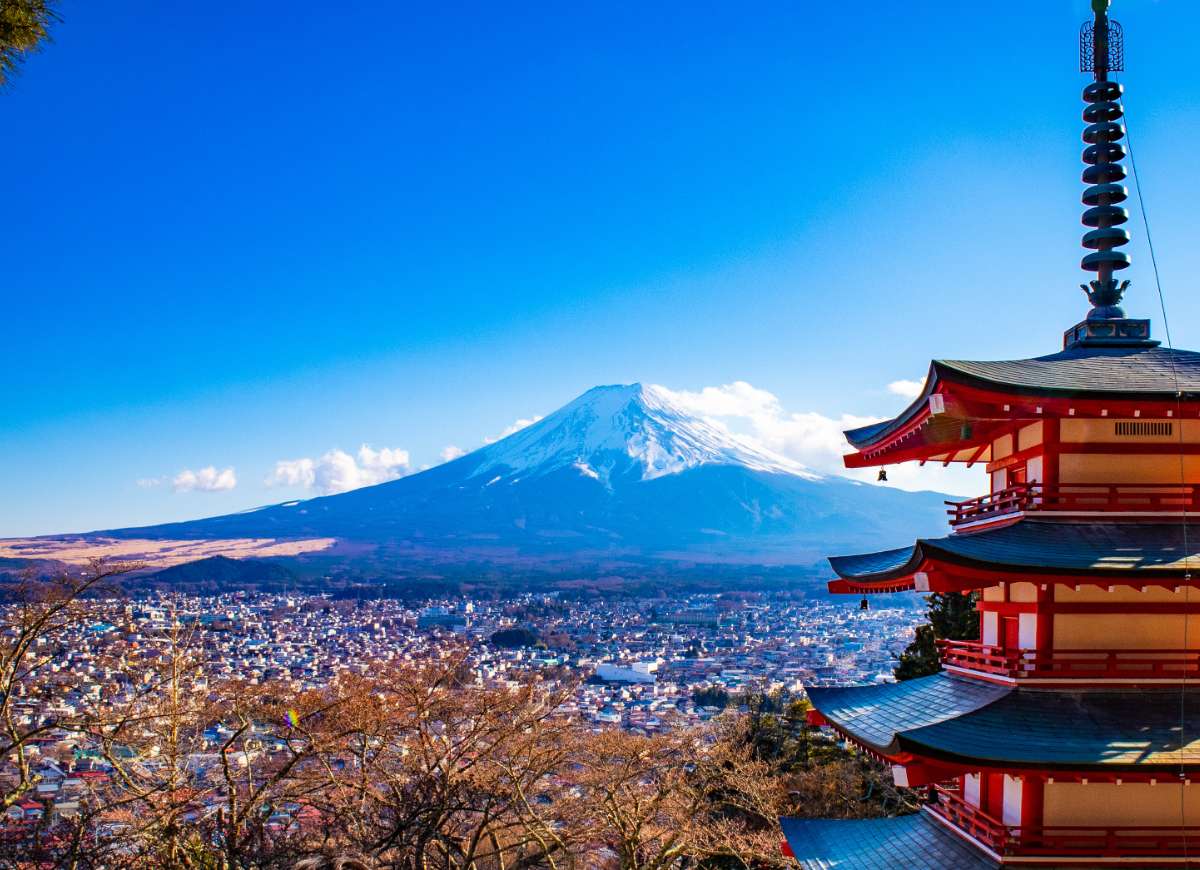
One of the hottest destinations among Australian travellers right now, Japan has much to offer all year round. Here’s where to go in the off season
From skiing the snowy mountains of Hokkaido in winter to witnessing the cherry blossoms bloom in spring, Japan offers something for every type of traveller, all year round. While autumn and spring are generally considered the country’s busy periods for tourism, different regions experience different peak periods. Wherever you plan on going, consider visiting in the low season to experience an alternative and, sometimes, more authentic side to Japan’s vast and varied regions.
Kansai
Off season: winter
Kansai’s cherry blossoms attract visitors from near and far during the sakura season but its wintry side offers natural wonders as well. Prefectures in the Kansai region include Hyogo, Kyoto, Nara, Osaka, Shiga and Wakayama. Winter festivals range from the Wakakusa Yamayaki festival in Nara Prefecture featuring fireworks and planned mountainside fires in January to the Toka Ebisu Festival in Osaka Prefecture that centres on offerings to Ebisu, the god of wealth. Ume, or Japanese plum trees, blossom in February and bring the parts and temples around Kansai to life with their intense pink flowers.
Visitors looking to relax at a quiet onsen (hot spring) retreat can bathe at Yunohana Onsion in Kameoka, which is accessible from Kyoto. More than a dozen temples and shrines surround the village, including Myoshoji Temple, Mt Asahi, Jinzoji Temple, Anaoji Temple and Hiedano Shrine.
Okinawa
Off season: spring
640 kilometres away from the Japanese mainland, lies the tropical islands of Okinawa. Reachable from both Tokyo and Osaka, Okinawa’s off-season in the spring suits travellers looking to soak up the sun before summer holiday makers arrive at the more than 160 islands comprising Okinawa.
Futamigaura Beach on Izena Island and its views of nearby Yanaha Island are only a 55-minute ferry from Okinawa Main Island. Okinawa in spring is also known for its events such as the hari boat races, lily blooms on Ie Island and nighttime firefly spectaculars on Kume Island.
Nagano
Off seasons: summer & autumn
While Nagano is known for its many ski resorts and cosy accommodations in winter, this mountainous region of Japan remains an outdoor destination in the spring and summer months with activities like glamping available. Private cabins and luxury tents are nestled in the forest and on mountainsides including the Private Woods Nada experience – boasting a sauna and open-air bath – Glamprook, Field Suite Hakuba and Mokki.
In Autumn Nagano’s winter sports ropeways offer perches from which to witness the colours of autumn foliage cascading down the mountainsides. Around mid to late October, Hakuba Mountain Harbor in Hakuba Valley bears witness to Hakuba’s famous three-tiered autumn scenery of white snow, red leaves and green forest.
Ancient trails and towns nestled in Nagano’s mountains present a step back in time. The Nakasendo Trail connecting Tokyo and Kyoto, walked by travellers and merchants during the Edo period, is still shrouded in forest along with many of the towns that supported it. From early October to early November, colourful decorations, such as freshly harvested persimmons, are hung outside local inns and shops.
Hokkaido
Off seasons: autumn & spring
The most sparsely populated island in Japan, Hokkaido is a prime destination for outdoor experiences in the summer months. But the milder temperatures and less humid conditions seen during autumn and spring rime the destination for exploration on foot, by bike or even as part of a road trip.
Six national parks in Hokkaido feature scenes including the lakes and “underwater Grand Canyon” at Shikotsu-Toya National Park, the jagged cliffs and waterfalls in the Shiretoko National Park and the mud pools and volcanoes at Akan-Mashu National Park. The Daisetsuzan National Park is considered one of the country’s best locations for hikers to discover volcanic trails, views over stunning gorges and public hot springs like Sounkyo Onsen. A visit to Shiretoko National Park brings travellers to a peninsula on the island’s easternmost portion, Shiretoko Peninsula, which was registered as a UNESCO World Heritage Site in 2005 for its flora and fauna.
Agriculture is one of Hokkaido’s main economic pillars, meaning there is no shortage of local fresh produce to enjoy in Hokkaido. Sea urchins, or uni, are a Hokkaido favourite and are harvested from June to August, especially from Rishiri, Rebun, and Shakotan. If you visit Hokkaido in early autumn, you should have no trouble finding this unmissable delicacy.


